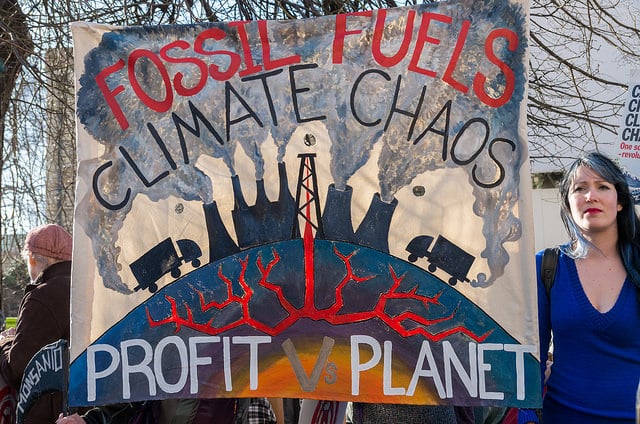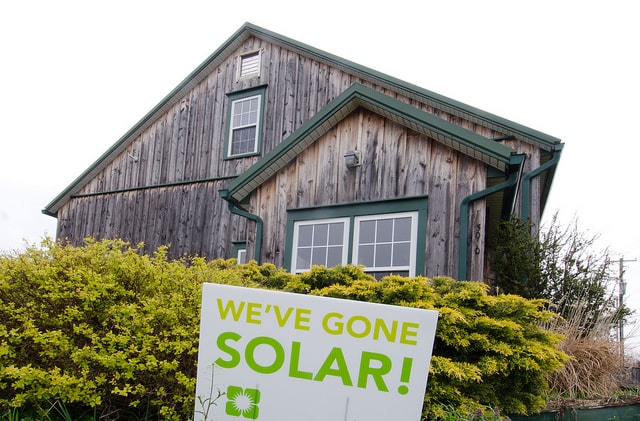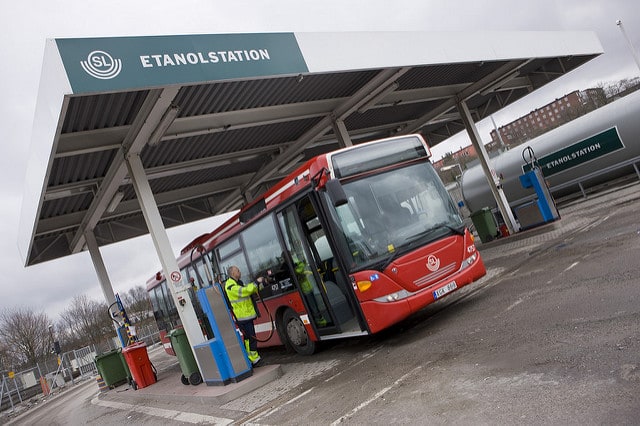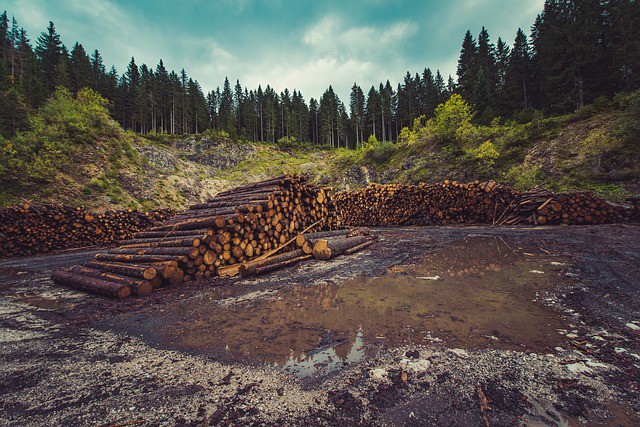20 Fantastic Ways To Stop Climate Change

Climate change is a frightening thing. Although a 1 degree rise in temperature sounds minimal, the effects of climate change are far-reaching, with floods, super-storms and droughts on the increase and seemingly no way to stop them. The powers that be hold conferences and pass memorandums, but it sometimes seems as if there are forces, if not actively perpetrating it, then at least contributing endlessly to it. We, the little people, often feel that there is nothing we can do about such a large-scale issue. But there are things we can do – everyday habits that we can cultivate to make a difference in our carbon footprint.
If you want to know the scientific consensus on global warming, read the reports by the Intergovernmental Panel on Climate Change. But if you want to know what the consensus will be ten years from now, read Jim Hansen’s work.
~ Chuck Kutscher
- Switch Off Lights!
As you go around the house before bedtime checking that the lights are out, check also that unused computers, TVs and even multi-plugs are switched off. Standby mode doesn’t mean the machine isn’t still using energy. Not only will you be doing the Earth a favor, you’ll be saving yourself money on electricity bills too.
- Switch to LED’s
Take your energy saving drive in the home one step further by changing your light bulbs to LEDs or compact fluorescents. Although more expensive, they are so much more energy efficient, which in turn frees you from exorbitant electricity bills. Try to find energy saving appliances too, and if your electricity company provides it, ask for a home energy audit to identify unexpected energy suckers.
- Tone It Down
The computer is one of the biggest energy leaches in your house and most of the energy is leached when it is on standby mode. Save electricity and the planet by setting it to turn off when not in use for long periods. Also check that it isn’t too bright – it hurts your eyes as well as the environment!
- Do Full Loads
More is less, when it comes to laundry, that is. Load your machine to it’s maximum capacity if possible, so that you can do less rounds of washing. Consider using a washing detergent that caters to both whites and colors to help you do this. Also consider investing in a slightly more expensive washing machine that can conserve water and energy according to your washing needs. And wash in cold water to avoid wasting energy to heat up the water.
- Try Car Pooling
Car pooling is one of the most efficient ways to save energy and money. If you and your colleague work in them same office and live in same area, it is recommended to do a car pool instead of driving separately for work.
- Give Renewable Energy a Shot!!!
Who doesn’t like free power? Renewable energy is free and sustainable. Install solar panels to generate your own power and supply excess power back to the grid and get return on your investment. If you can’t bear one time installation cost, then ask your utility to switch your account to clean, renewable power.
- Use Programmable Thermostat
Conversely, reconsider how you use things like clothes driers and air-conditioning. These types of heat-releasing machines suck up a lot of electricity. If you can manage, use the best (and cheapest) drier available – the sun. Use programmable thermostats to control your air conditioner or heater use. Better yet, if you are lucky enough to be able to design or remodel your home, try to design it to work with your environment to keep you naturally warm or cool.
- Conserve Water
Just as we can cut down on energy usage, we can also reduce water usage in our daily lives. Basic habits like turning off the tap when you are soaping up and filling up the sink to wash dishes all make a difference. Using a cute watering can to water the plants in the evening also helps as the water isn’t evaporated up by the sun. One word of warning, however – avoid turning the water on and off too many times if you use an external water heater. Every time the heater charges up energy is wasted.
- Eat Beets … And Broccoli … And Corn
Going off meat a couple of times a week is a great idea because it’s good for us AND the planet. Our bodies use less energy to digest greens, just as less energy is used to produce them. Cattle-rearing takes up a lot of energy when you consider the energy expended to produce food for the animals, as well as house them and care for them.
- Avoid Processed Foods
Since we are on the subject of the food chain, try to avoid canned and processed foods. Opt for fresh produce – which is healthier for you anyway. The more processed foods are, the more energy is expended to produce them.
- Eat Organic Foods
When planning your family’s meals, look for produce that is locally produced and in season. Imported produce eats up a lot of energy – from the preservation and storage processes to the fuel used to transport it to us. The preservative chemicals affect the environment, too, when they are dumped. Don’t forget the fact that local, in-season produce is fresher and tastier.
- The 3 Rs (Reduce, Reuse, Recycle)
Do you remember what they are? Reduce, Reuse and Recycle. Reduce waste by composting cast-off from the kitchen and garden. There are many step-by-step guides as to how to compost nowadays, and it’s great for your garden! Reuse whatever you can – a lot of packaging can be turned into great (and free) art and craft items for your children … saving you money! And take the time to separate the items in your trash can and send them to the recycling center.
- Stop Those Junk Mails
All those junk mails that you receive at your home or office use paper and electricity to be produced and fossil fuel to be transported. Unsubscribing from all those junk mails can help to reduce greenhouse gas emissions. If you live in U.S., you can register with DirectMail to get your name removed from lists used by the industry.
- These Boots Were Made For Walking
The obvious way to save some energy and slow climate change down is to walk instead of driving, taking the bus or train. If you are headed nearby, get some exercise and reconnect with your environment. Added bonuses are that you don’t have to worry about traffic, parking or timetables.
- Go For Fuel Efficient Vehicles
If driving is unavoidable, there are still some ways you can keep it green. If you’re looking to buy a new car, go for fuel-efficient vehicles and remember that size matters – the smaller the better, in this case. Try to drive as smoothly as possible by easing onto the brakes only when you need to. Slow down to the minimum allowed speed to avoid using up fuel quickly. Avoid using the air conditioner if possible, and make your vehicle as light as possible by keeping it clutter-free. Also always fully inflate your tires to maximize their efficiency. Lastly, don’t forget that carpooling is fun and Earth-friendly too!
- All For One, And One For All
When you make your morning coffee, encourage the whole family to make their drinks at the same time too so that you don’t have to start up the kettle so many times. Every time you turn the kettle on, it eats up a startling amount of energy because of the heating element.
- Fly Less
Before taking to the skies, consider alternative travel plans to get to your destination. Road trips, bus rides or train rides can be fun and they produce smaller carbon footprints. Instead of taking boring business trips that take you away from your family, try Skyping, Facetiming or even good old videoconferencing.
- Pay For Emissions
Canada has what are called carbon taxes that are imposed on companies deemed to have large carbon footprints. It’s a fantastic way to force businesses to become more energy-efficient and take a financial load off environmentally friendly companies and even households. Every country should be encouraged to copy this idea, so speak out to get it going in your country!
- Sell Carbon Offsets
If you own a company that emit harmful emissions in the environment, its a time to sell carbon offsets. According to Wikipedia, “A carbon offset is a reduction in emissions of carbon dioxide or greenhouse gases made in order to compensate for or to offset an emission made elsewhere.” Carbon offsetting help companies to compensate for their carbon reduction goals by investing their money in various forestry and resource conservation projects.
- Get Your Friends and Relatives Involved
Follow the news on climate change and support local groups that want immediate action on climate change. Get your friends and relatives involved in your support against climate change. Tell them why there is an urgent need to support it and how reducing greenhouse gas emissions can help create better environment, build healthier communities and spur economic growth.
As you can see, there are many things we can do to make a difference in.
Source: David Suzuki







